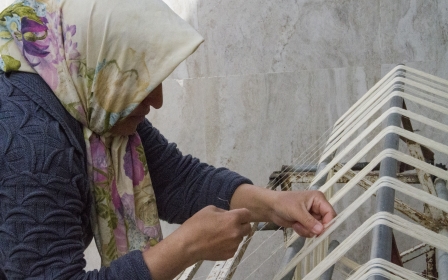
The woman reviving Yemen’s dressmaking heritage through dolls
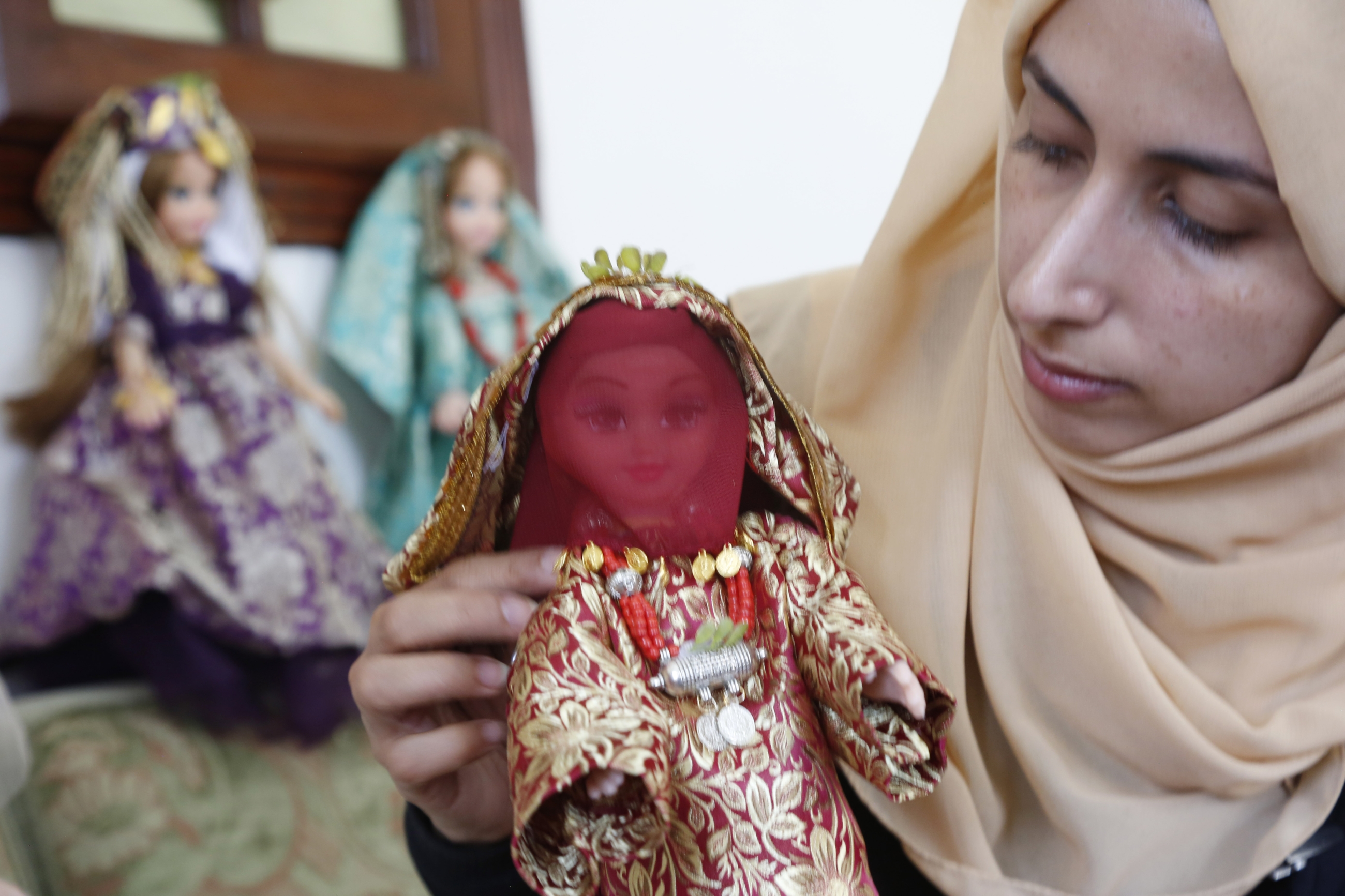
Nujood Abdullah al-Wazir’s childhood dream was to put her crafting skills to use making traditional woollen dolls. The 30-year-old instead followed a different career path, pursuing a master's degree in political science. As war ravaged Yemen, impacting not only the economy but also job opportunities, she returned to her original passion. (All photos by Mohammed Hamoud.)

She named her doll-making project Harawi Joudi (Nujood's dolls) , making figures with a wood base, layered with fabric and cushioning comprising simple and affordable materials. Yemen's war means more premium materials are either hard to come by or too expensive to be able to turn over a profit.

Wazir says that her project is more than just a way of making a living, it is also a way of reviving Yemeni heritage, which some argue is disappearing as a result of war and modernisation. Folk dress is often ignored in favour of western styles, particularly with regard to toys. At markets, her dolls, which are dressed in Yemeni fashion, stand out from the western-influenced alternatives.

However, Wazir has not entirely forsaken western fashions, as seen in this doll of a bride in a western wedding outfit. This is reflective of some Yemeni weddings, in which multiple dress changes take place and western styles are worn along with traditional ones.
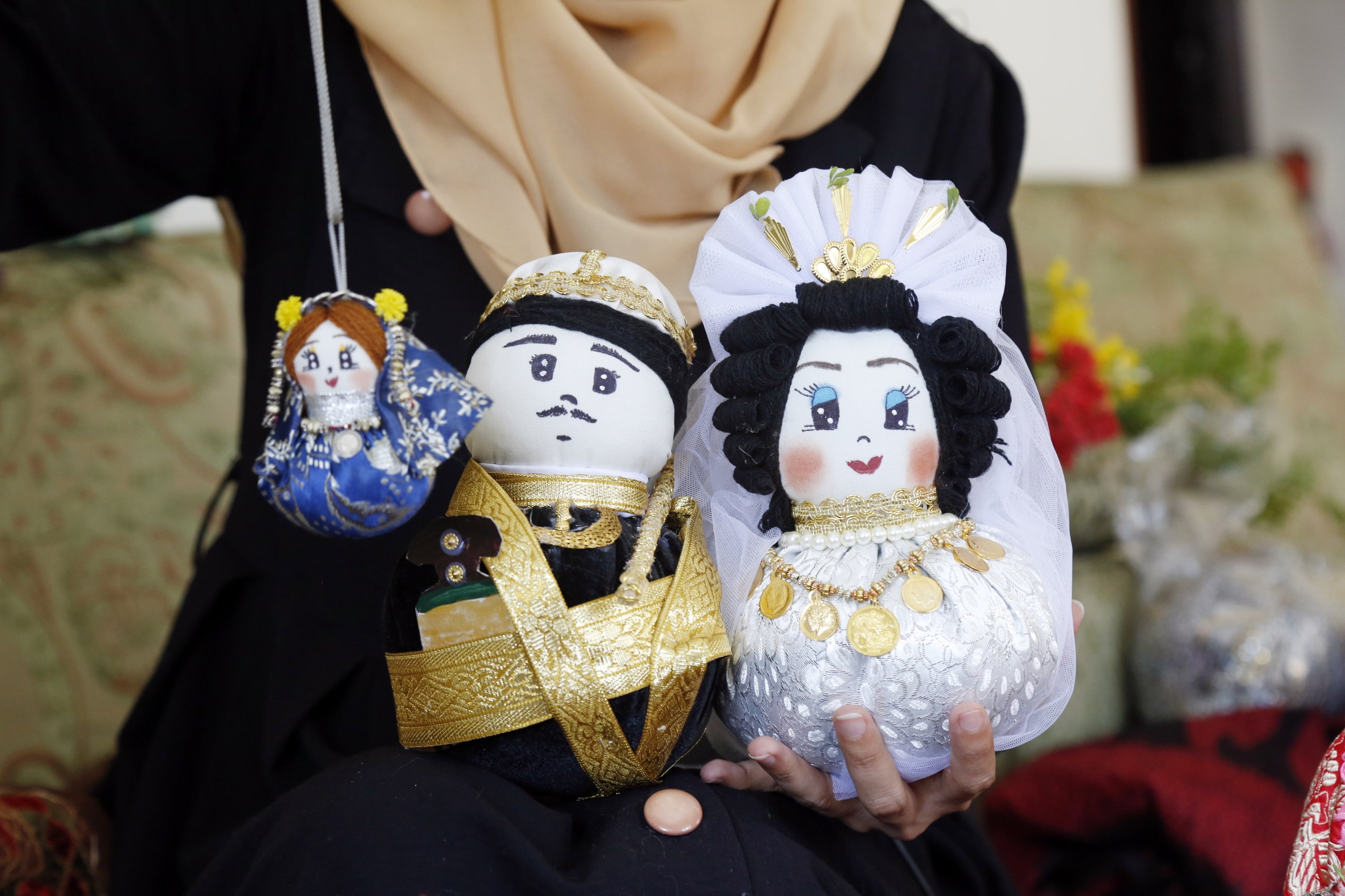
Wazir says she spends considerable time researching clothing and has even turned to community elders to ensure she gets the most authentic designs. Part of her research involved touring the markets of Sanaa's old city, talking to traders about their materials, styles and embellishments. What she ends up with are essentially miniature versions of actual Yemeni outfits.

Each doll is made bespoke and clothed with a unique outfit that reflects the cultural diversity of each of Yemen's regions. The country has more than 12o distinct styles of folk dress and distinctions can be quite dramatic. Many dresses feature embroidery, which can take hours to complete. Silk and metallic cotton threads are often used to add detail.
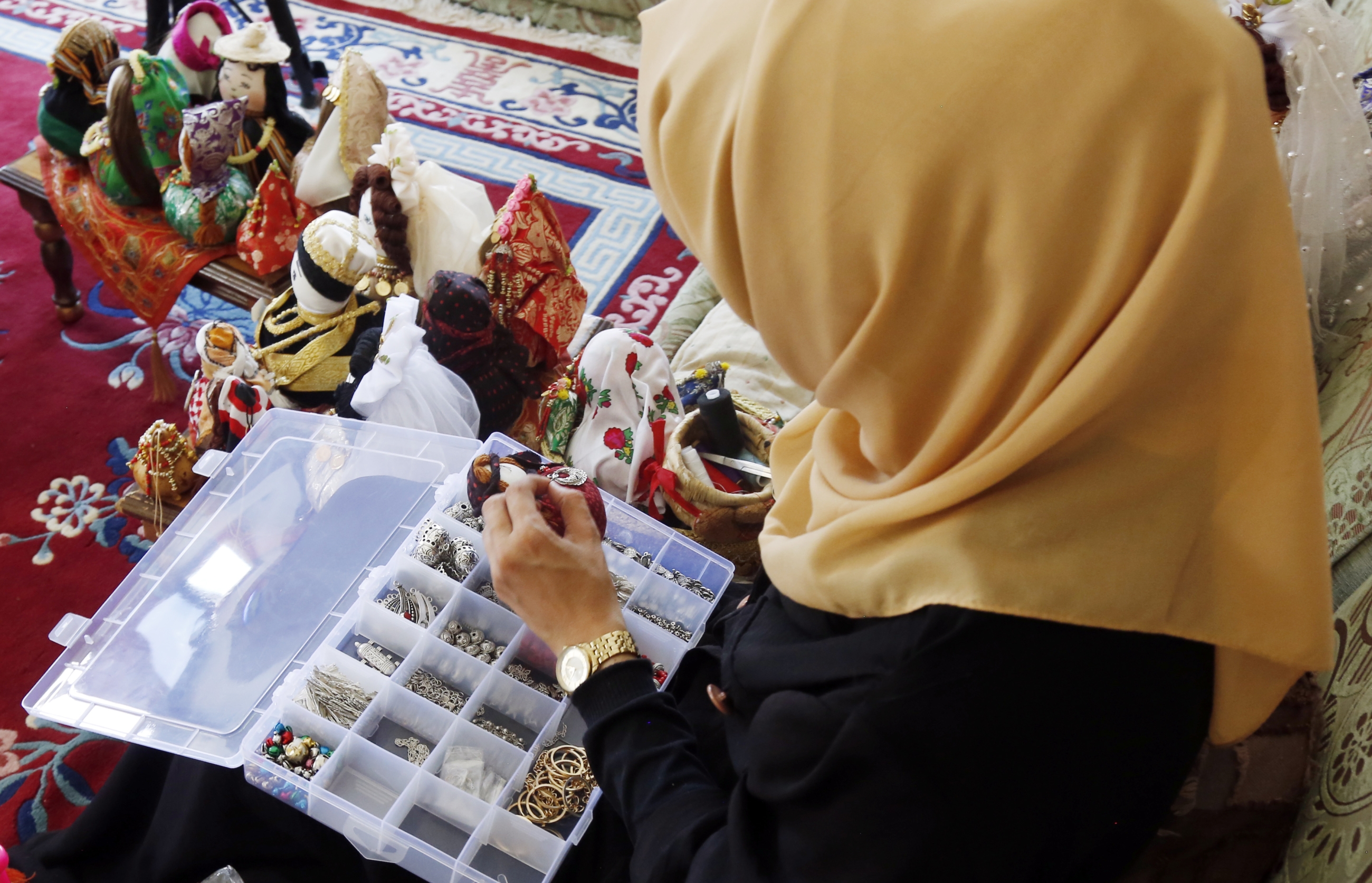
Each doll takes around four hours to make, excluding finishing touches such as accessories, colour patterns and make-up. Wazir says she brushes up on her skills and picks up new designs by watching videos online. The dolls vary in price: some of the bigger, detailed ones cost around 8,500 Yemeni riyals ($33); smaller ones cost 1,000 Yemeni riyals ($4).
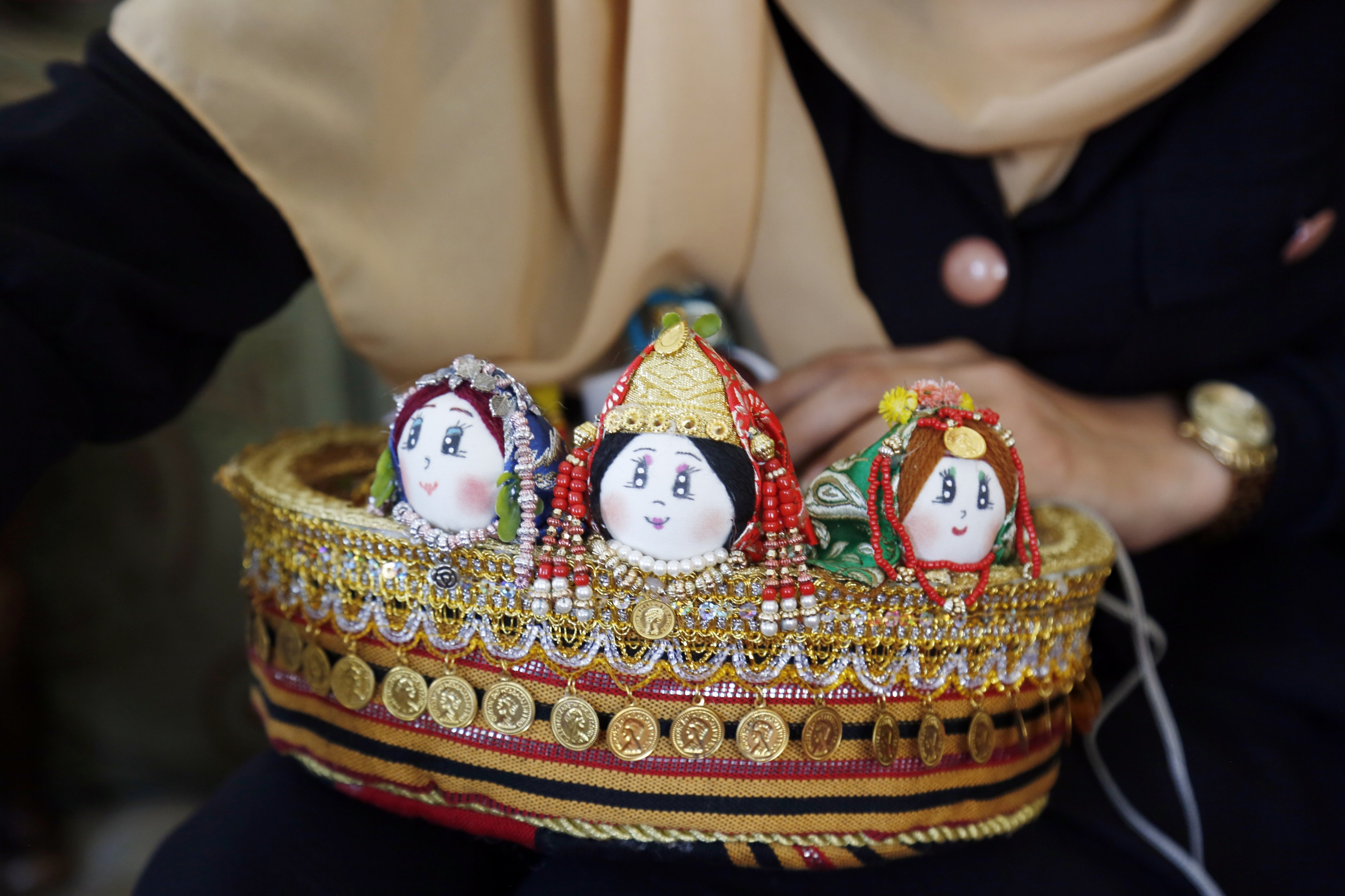
With the rise of modern forms of employment and the relative abundance of cheap western clothing, traditional Yemeni folk clothes are slowly disappearing, with few skilled designers and producers remaining. Historic methods of clothes production and design remain undocumented, which means knowledge of the craft is dwindling with each new generation. Wazir's work is helping to counter that trend.
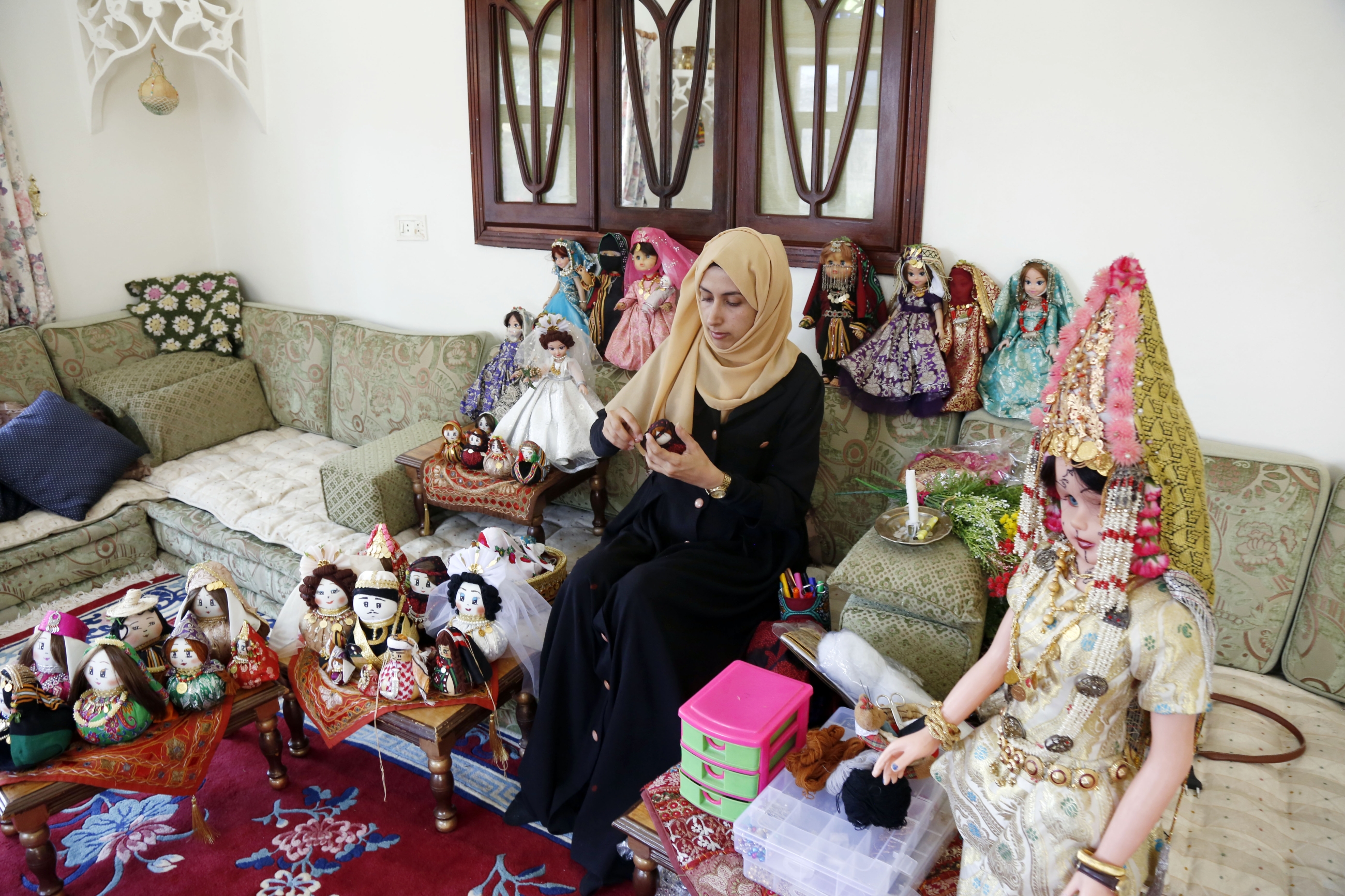
While modernity in one sense has brought about the decline of traditional clothes designs, it also provides the tools for the preservation of folk dress. Wazir started posting about her dolls online in 2019 on social media platforms, sparking sales among the Yemeni diaspora, as well as those interested in Yemeni culture.
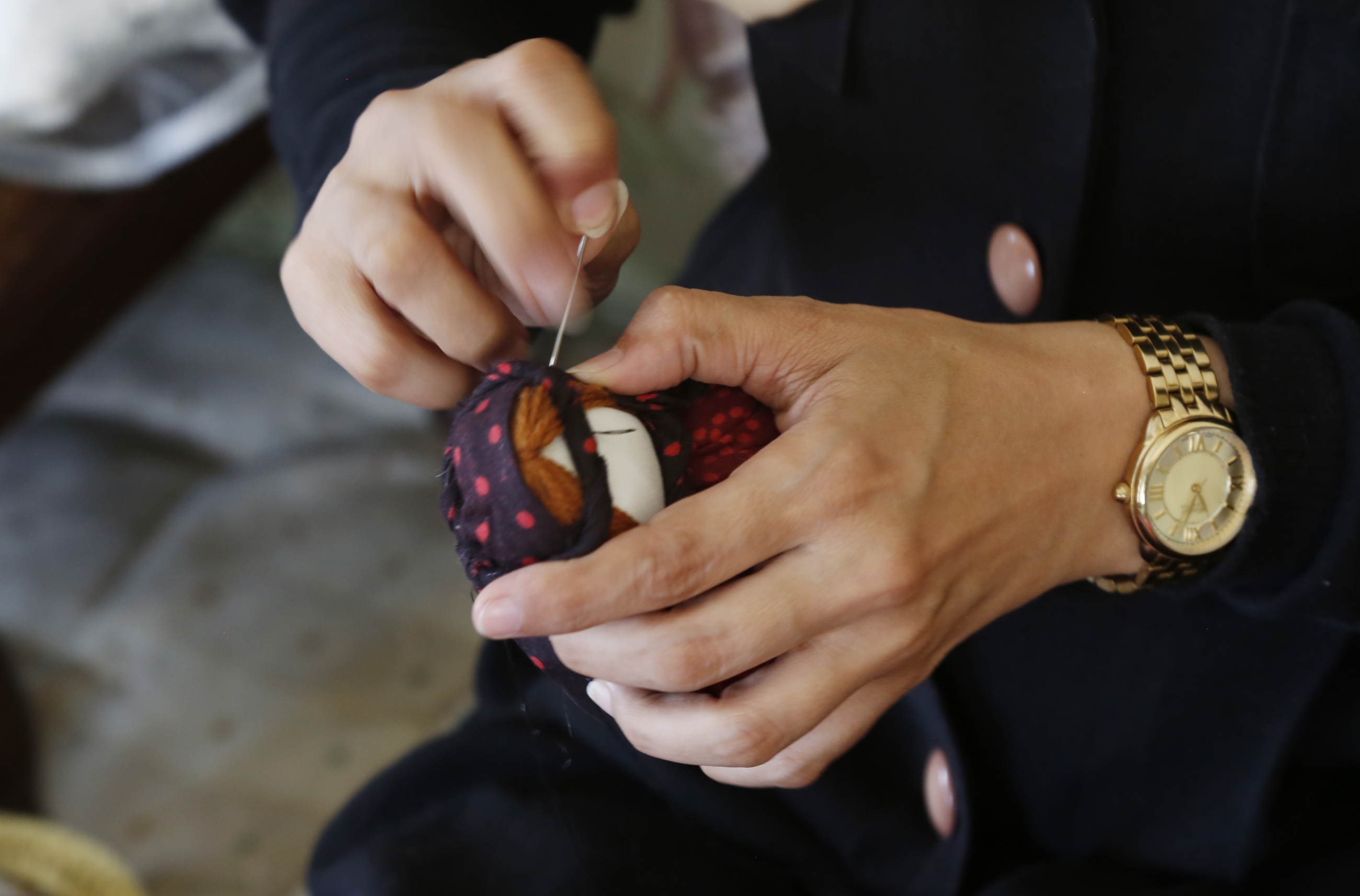
She hopes to sell more of her dolls online, to customers living abroad. For Wazir, selling her wares online is not just a novelty but also a gentle way of countering the negative perception surrounding the country since the war started in 2014. She also hopes that by independently earning a living, she will be able to break cultural barriers and prove that women can support themselves.
This article is available in French on Middle East Eye French edition.
Middle East Eye delivers independent and unrivalled coverage and analysis of the Middle East, North Africa and beyond. To learn more about republishing this content and the associated fees, please fill out this form. More about MEE can be found here.



